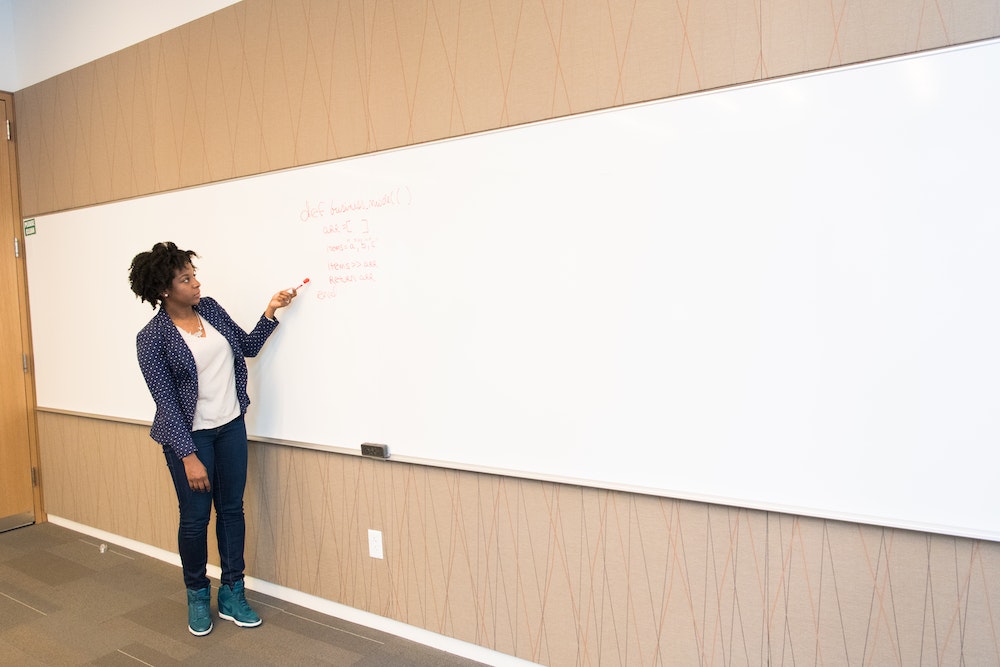The deterioration of boundaries, compounded with poor teaching conditions, leads to a myriad of problems. It’s difficult to create connections, let alone teach content, while being cursed by students.
I usually don’t care to talk about my experiences teaching. I’m afraid that I would paint a deficit-based portrayal of my students and families (unless, of course, you count that parent conference where I was greeted by two pet snakes), or that the discussion would shift to Abbott Elementary.
Nevertheless, part of the reality of working in the School District of Philadelphia is that teachers are frequently verbally and physically assaulted.
At one school that I worked at in Kensington, a police officer was pushed down the stairs.
At another school in North Philadelphia, two parents sneaked up the stairs to confront me in the middle of a class period for failing a learner who didn’t turn in a project.
ADVERTISEMENT
Friends and adult family members are called in to settle peer conflicts, and on and on. The cumulative stories haunt schools and contribute to general feelings of anxiety for staff and students alike. It’s crucial to note that these are not the actions of a majority, but often just a few students in every school. But the ripple effects extend outward from the school to the community.
When these incidents occur, I cannot help but think of the importance of boundary-making. Simply put, boundaries are a dividing line between what is permissible and off-limits. Most therapists would describe a boundary as a walled perimeter.
For years, in the wake of staffing shortages and inequitable funding, teachers have borne the burden of broken boundaries. For years, teachers have struggled to hold students accountable for their actions — for crossing boundaries that have been clearly outlined in the Code of Conduct. Disciplinary forms and requests for support and accountability for learners go unanswered — even for the most seasoned and ardent professional.
ADVERTISEMENT
In many buildings, students continue to aimlessly roam the hallways unsupervised. Students randomly walk in and out of school buildings. Students verbally assault teachers and peers with little to no consequence. As a result, boundaries have been destroyed and teachers are leaving the district in droves.
The deterioration of boundaries, compounded with poor teaching conditions, leads to myriad problems. It is difficult to create connections, let alone teach content, while being cursed out by a student. It is difficult to manage a classroom when there are no breaks in the day to mentally recuperate, and when you are physically deteriorating from the environmental conditions. It is difficult to set boundaries when you feel broken in what many regard to be a broken system. The breaking down of boundaries is a vicious cycle and emboldens students to … well, push the boundaries further.
When I raise these issues with those who aren’t in the classroom, some chime in and stress the importance of trauma-informed education and socio-emotional learning. These things are important, but they must go in tandem with high expectations for excellence and a learning environment supported by strong boundaries. A few emotional regulatory activities and discussions of a growth mind-set are not a substitute for healthy boundaries.
What I am advocating is enforceable, transparent, and commonsense boundary creation that supports teachers and learners.
Let me be clear: I am not suggesting accountability measures that push students out of school or, in any way, contribute to the school-to-prison pipeline. What I am advocating is enforceable, transparent, and commonsense boundary creation that supports teachers and learners — and communicates the expectation that certain actions are not permissible. When learners are having difficulty, it provides space and room to give better support.
This does not mean dismissing inappropriate behavior under the banner of restorative justice. Best-selling author and researcher Brené Brown writes: “Boundaries are a prerequisite for compassion and empathy. We cannot connect with someone unless we are clear with where they end and where we begin. If there’s no autonomy between people, then there’s no compassion and empathy, just enmeshment.” If proper boundaries can’t be set, there’s no foundation for learner success and teacher connectivity and longevity.
These issues are not new and have long plagued the district. As stories continue to trickle in about school climate issues, the question on my mind has become not what are we going to do, but why haven’t we listened to these stories before?
Lydia Kulina-Washburn has taught in Philadelphia public schools for eight years.

